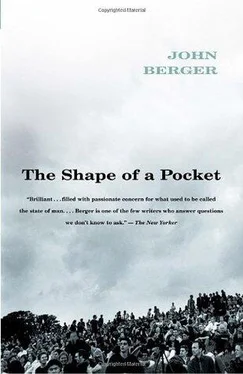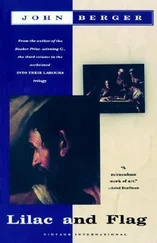December 1994
Months later, the indigenous of south-eastern Mexico again reiterated their rebellion, their resistance to genocide, to death … The reason?
The supreme government decided to carry out organised crime, the essence of neoliberalism, that money, the god of modernity, had planned. Dozens of thousands of soldiers, hundreds of tons of war materials, millions of lies. The objective? The destruction of libraries and hospitals, of homes and seeded fields of corn and beans, the annihilation of every sign of rebellion. The indigenous Zapatistas resisted, they retreated to the mountains and they began an exodus that today, even as I write these lines, has not ended. Neoliberalism disguises itself as the defence of a sovereignty which has been sold in dollars on the international market.
Neoliberalism, this doctrine that makes it possible for stupidity and cynicism to govern in diverse parts of the earth, does not allow for inclusion other than that of subjection to genocide. ‘Die as a social group, as a culture, and above all as a resistance. Then you can be part of modernity,’ say the great capitalists, from the seats of government, to the indigenous campesinos. These indigenous people irritate the modernising logic of neomercantilism. Their rebellion, their defiance, their resistance, irritates them. The anachronism of their existence within a project of globalisation, an economic and political project that, soon, will decide that poor people, all the people in opposition, which is to say, the majority of the population, are obstacles. The armed character of ‘We are here!’ of the Zapatista indigenous people does not matter much to them nor does it keep them awake (a little fire and lead will be enough to end such ‘imprudent’ defiance). What matters to them, and bothers them, is that their very existence, in the moment that they (the indigenous Zapatistas) speak out and are heard, is converted into a reminder of an embarrassing omission of ‘neoliberal modernity’: ‘These Indians should not exist today, we should have put an end to them BEFORE. Now annihilating them will be more difficult, which is to say, more expensive.’ This is the burden that weighs upon neoliberalism made government in Mexico.
‘Let’s resolve the causes of the uprising,’ say the negotiators of the government (leftists of yesterday, the shamed of today) as if they were saying: ‘All of you should not exist, all this is an unfortunate error of modern history.’ ‘Let’s resolve the causes’ is the elegant synonym of ‘We will eliminate them’. For this system which concentrates wealth and power and distributes death and poverty, the campesinos , the indigenous, do not fit in the plans and projects. They have to be got rid of, just like the herons … and the eagles … have to be got rid of.
What remains mysterious is not so much what has been deliberately hidden but, as I have said, the surprising range of the possible. And thus, too, there is little performing: peasants do not play roles as urban characters do. This is not because they are ‘simple’ or more honest or without guile, it is simply because the space between what is unknown about a person and what is generally known — and this is the space for all performance — is too small.
John Berger, ibid.
December 1994
A cold dawn that drags itself between the fog and the thatched roofs of the village. It is morning. The dawn goes away, the cold remains. The little paths of mud begin to fill with people and animals. The cold and a little footpath accompany me in the reading of Pig Earth. Heriberto and Eva (five and six years old respectively) come and grab (‘they snatched’ I should say, but I don’t know if the distinction is understood in English) the book. They look at the drawing on the front cover (it is a Madrid edition from 1989). It is a copy of a painting by John Constable, an image of an English countryside. The cover of your book, Mr Berger, summons a rapid connection between image and reality. For Heriberto, for example, there is no doubt that the horse in the painting is La Muñeca (The Doll) (a mare that accompanied us in the long year during which the indigenous rebellion governed south-eastern Mexico), whom no one could mount except Manuel, a playmate who was twice the age, size and weight of Heriberto, who was Chelita’s brother, and consequently, also his future brother-in-law. And what Constable called ‘a river’ was really a riverbed, a riverbed that crossed through La Realidad (La Realidad is the name of a village), a reality which is the limit of Heriberto’s horizons. The furthest place that his trips and running around have taken him is la realidad.
Constable’s painting did not remind Heriberto and Eva of the English countryside. It did not take them outside of the Lacandon jungle. It left them there, or it brought them back. It brought them back to their land, their place, to their being children, to their being campesinos , to their being indigenous, to their being Mexicans and rebels. For Heriberto and Eva, Constable’s painting is a coloured drawing of La Muñeca and the tide, Scene on a Navigable River , is not a valid argument: the river is the riverbed of La Realidad, the horse is the mare La Muñeca, Manuel is riding, and his sombrero fell off, and that’s it, on to another book. And we do that, this time it is about Van Gogh and for Eva and Heriberto, the paintings of Holland are scenes from their land, of their being indigenous and campesinos. After this Heriberto tells his mother that he spent the morning with the Subcomandante.
‘Reading big books,’ says Heriberto, and I believed that this earned him a free hand with a box of chocolate cookies. Eva was more far-sighted, and asked me if I didn’t have a book about her doll with the little red bandanna.
The act of writing is nothing except the act of approaching the experience written about; just as, hopefully, the act of reading the written text is a comparable act of approach.
John Berger, ibid.
Or of distancing, Mr Berger. The writing, and above all, the reading of the written text could be an act of distancing. ‘The written word and the image,’ says my other, which to add problems paints himself, alone.
I think that yes, that the ‘reading’ of the written word and the image could approximate the experience or distance it. And so, the photographic image of Alvaro, one of the dead combatants in Ocosingo in January 1994, returns. Alvaro returns in the photo. Alvaro with his death speaks in the photo. He says, he writes, he shows: ‘I am Alvaro, I am an indigenous, I am a soldier, I took up arms against being forgotten. Look. Listen. Something is happening in the closing of the twentieth century that is forcing us to die in order to have a voice, to be seen, to live.’ And from the photo of Alvaro dead, a far-off reader from the distance could approximate the indigenous situation in modern Mexico, NAFTA, the international forums, the economic bonanza, the first world.
‘Pay attention! Something is evil in the macroeconomic plans, something is not functioning in the complicated mathematical calculations that sing the successes of neoliberalism,’ says Alvaro with his death. His photo says more, his death speaks, his body on the soil of Chiapas takes voice, his head resting in a pool of blood: ‘Look! This is what the numbers and the speeches hide. Blood, cadavers, bones, lives and hopes, crushed, squeezed dry, eliminated in order to be incorporated into the indices of profit and economic growth.’
‘Come!’ says Alvaro. ‘Come close! Listen!’
But Alvaro’s photo also can ‘be read’ from a distance, as a vehicle that serves to create distance in order to stay on the other side of the photo, like ‘reading’ it in a newspaper in another part of the world. ‘This did not happen here,’ says the reader of the photo, ‘this is Chiapas, Mexico, a historical accident, remedial, forgettable, and … far away.’ There are, in addition, other readers who confirm it: public announcements, economic figures, stability, peace. This is the use of the indigenous war at the end of the century, to revalue ‘peace’.
Читать дальше












